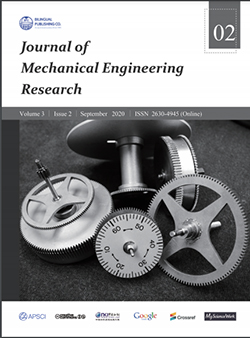Optimal batching plan of deoxidation alloying based on principal component analysis and linear programming
DOI:
https://doi.org/10.30564/jmer.v3i2.1903Abstract
As the market competition of steel mills is severe, deoxidization alloying is an important link in the metallurgical process. To solve this problem, principal component regression analysis is adopted to reduce the dimension of influencing factors, and a reasonable and reliable prediction model of element yield is established. Based on the constraint conditions such as target cost function constraint, yield constraint and non-negative constraint, linear programming is adopted to design the lowest cost batting scheme that meets the national standards and production requirements. The research results provide a reliable optimization model for the deoxidization and alloying process of steel mills, which is of positive significance for improving the market competitiveness of steel mills, reducing waste discharge and protecting the environment.
Keywords:
deoxidization alloying; principal component regression analysis; linear programming; optimization of dosing schemeReferences
[1] Hu Jingtao. Development and online application of LF refining deoxidation alloying model [D]. Northeastern University, 2011.
[2] Zhang Chunxia. Deoxidation alloying control model of steelmaking process [A]. Chinese Metal Society. Proceedings of 1997 China Iron and Steel Annual Conference (Part 2) [C]. Chinese Metal Society: Chinese Metal Society, 1997: 4.
[3] Xu Zhe. Optimized setting and application of alloy addition amount in ladle refining furnace [D]. Shenyang: Northeastern University, 2019.
[4] Zhang Wenle. Research on alloying model of LF refining furnace [D]. Shenyang: Northeastern University, 2011.
[5] Cheng Ruonan, Wang Ruimei, Ren Cong, et al. Optimization of the "deoxidation alloying" batching scheme for molten steel [J]. Energy Saving, 2020, 39 (02): 86-87.
[6] Dai Yu, Xie Weiwei, Chen Jixiang, et al. Analysis of deoxidation alloying ingredients based on gray correlation [J]. Scientific Consulting (Science and Technology Management), 2019 (09): 31.
[7] Zhou Huiling, Zhang Qian, Han Xinyue, et al. Optimized design of deoxidation alloying scheme for converter smelting [J]. World Nonferrous Metals, 2019 (13): 12-13.
[8] Liu Fangyu, Zhou Yi, Tang Jiaxin, et al. Optimization of the "deoxidation alloying" batching scheme for molten steel [J]. Modern Computer, 2019 (22): 8-13.
[9] Liu Pengmai, Zhu Jiaming, Gao Zhengshuai, He Yaning. Analysis of deoxidizing alloying ingredients based on BP neural network [J]. Journal of Qilu University of Technology, 2019, 33 (05): 74-80.
[10] Zhang Chunxia. Deoxidation alloying control model of steelmaking process [A]. Chinese Society of Metals. Proceedings of 1997 China Iron and Steel Annual Conference (Part 2) [C]. Chinese Metal Society: Chinese Metal Society, 1997: 4.
[11] Li Lei. Research on MES construction of metal smelting enterprises based on mass customization [D]. Ocean University of China, 2011.
[12] Liu Jie, Wang Tao. The application of multi-objective linear programming in the adjustment of product structure of iron and steel enterprises [J]. Theoretical Monthly, 2008 (08): 171-173.
Downloads
Issue
Article Type
License
Copyright © 2020 Zinan Zhao, Shijie Li, Shuaikang Li

This is an open access article under the Creative Commons Attribution-NonCommercial 4.0 International (CC BY-NC 4.0) License.




 Zinan Zhao
Zinan Zhao

